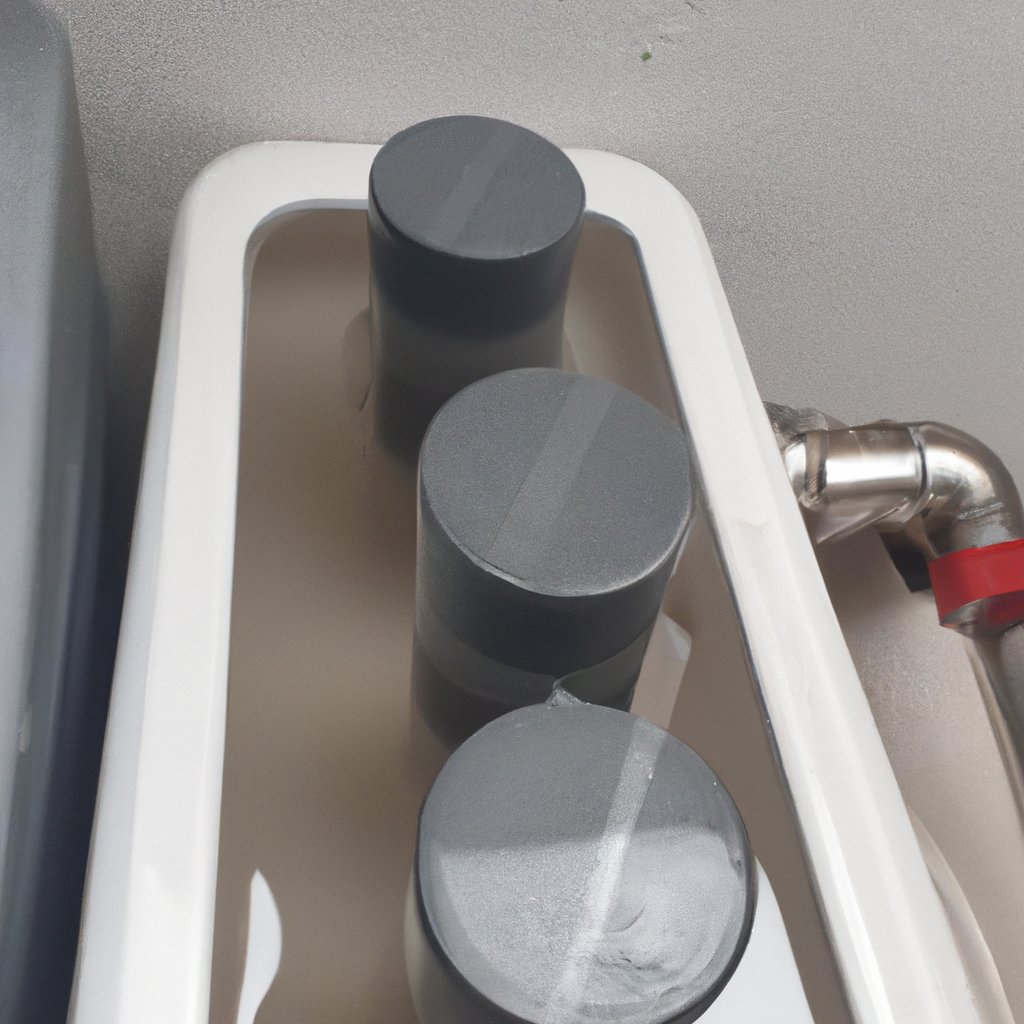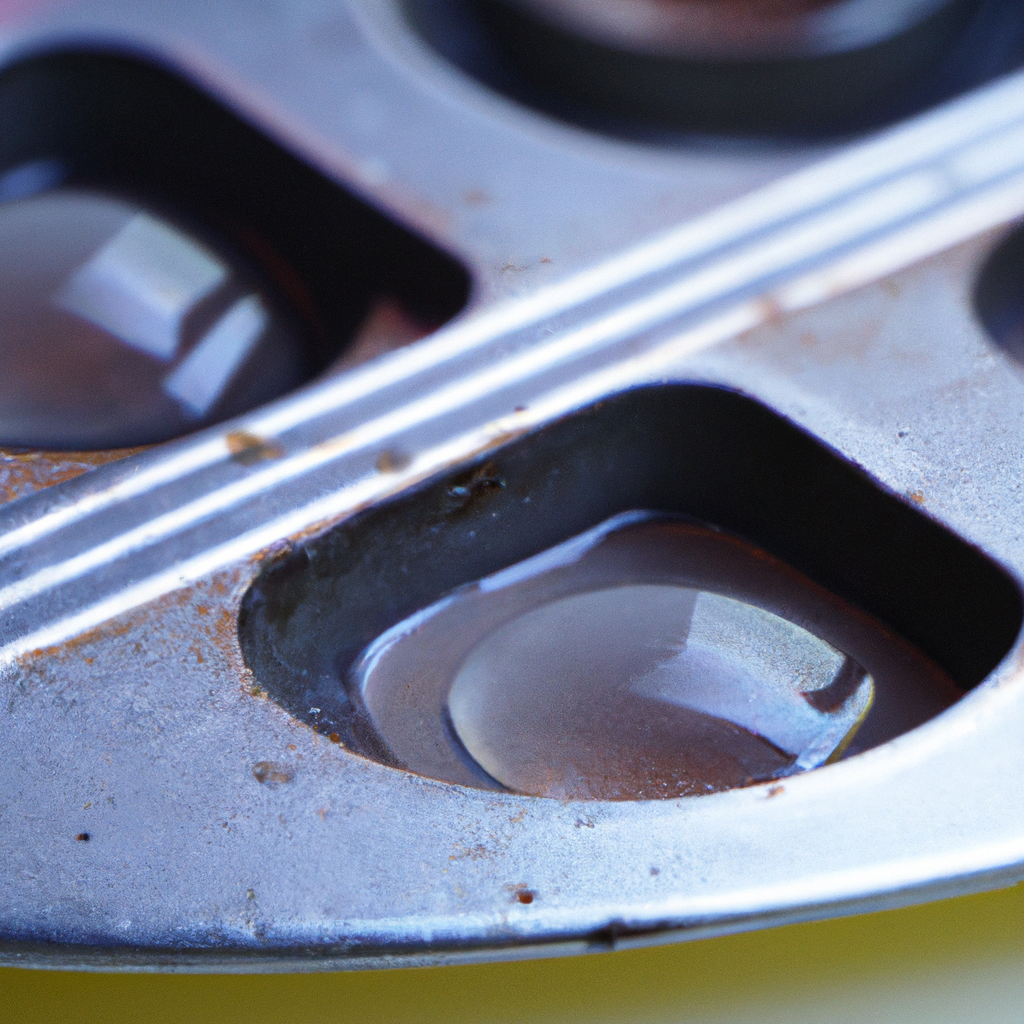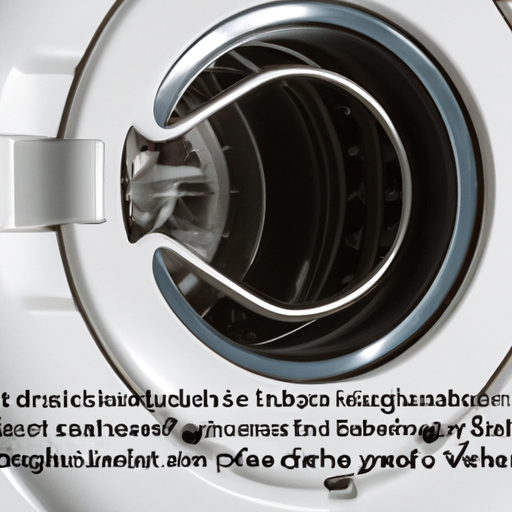As the winter months approach, many homeowners are gearing up to weatherproof their homes against the elements. One of the biggest challenges when it comes to keeping your living space warm and dry is dealing with condensation build-up on double-glazed panels. To help you get to grips with this frustrating problem, we’re here to reveal the secret to getting rid of condensation on double-glazed panels. From simple tips and tricks to more advanced techniques, we’ve got you covered with everything you need to know about removing unwanted condensation from your home. So, let’s get started!
1. The Hassle of Condensation Buildup on Double-Walled Polycarbonate Panels
Double-walled polycarbonate panels are commonly used in greenhouses, sunrooms, and other structures that require energy-efficient and durable glazing materials. However, one common issue with these panels is the buildup of condensation between the two layers of the wall. Here are some of the hassle’s that this issue can cause:
1. Reduced Visibility: The buildup of moisture on the inside of double-walled polycarbonate panels can reduce visibility and make it difficult to see through the panels. This can be a major problem in greenhouses, where growers need to inspect their plants regularly.
2. Mold Growth: Condensation buildup on double-walled polycarbonate panels can also create a moist environment that is conducive to mold growth. If left unchecked, mold can spread rapidly throughout the structure and cause health problems for its occupants.
3. Reduced Energy Efficiency: Condensation on the inside of double-walled polycarbonate panels can reduce the insulation value of the panels, making them less energy-efficient. This can lead to higher heating and cooling costs and a less comfortable indoor environment.
4. Damage to Structure: In extreme cases, the buildup of condensation between double-walled polycarbonate panels can cause damage to the structure. The additional weight of the water can cause the panels to warp, crack, or even break, which would require costly repairs.
5. Reduced Lifespan: Condensation buildup on double-walled polycarbonate panels can also reduce the lifespan of the panels. The moisture can cause the panels to deteriorate faster, leading to a shorter lifespan and more frequent replacement.
To prevent these hassles, it is important to take steps to reduce condensation buildup on double-walled polycarbonate panels. Proper ventilation and air circulation can help to prevent moisture buildup, as can the use of anti-fog coatings or dehumidifiers. Additionally, regular cleaning and maintenance can help to keep the panels in good condition and prevent damage.
2. Why the Right Ventilation Is Key to Preventing Condensate Buildup
Condensate buildup is a common issue that often occurs in homes and buildings with poor ventilation. The accumulation of moisture in the air can lead to serious problems, such as mold growth, water damage, and structural deterioration. It’s important to recognize the importance of proper ventilation and its role in preventing condensation.
One of the main reasons why proper ventilation is critical for preventing condensate buildup is that ventilation helps to eliminate excess moisture in the air. When moist air is allowed to accumulate in a confined space, it can easily condense and form droplets on surfaces, which can lead to mold growth and other issues. Ventilation systems are designed to remove moisture from indoor spaces, preventing the conditions that lead to condensation.
Another reason why ventilation is important for preventing condensation is that it helps to regulate temperature and humidity levels. When the temperature and humidity levels are too high, it can create an environment where condensation is more likely to occur. By maintaining proper airflow and temperature control, ventilation systems can help to prevent the formation of condensation on surfaces.
In addition to preventing condensate buildup, proper ventilation can also improve indoor air quality. By removing moisture from the air, ventilation systems help to reduce the likelihood of mold, mildew, and other harmful irritants from growing. This can be particularly important for individuals with respiratory issues or allergies.
There are several different types of ventilation systems that can be used to prevent condensation buildup. These include natural ventilation, such as through opening windows and doors or using exhaust fans, and mechanical ventilation, which involves using fans and ductwork to circulate air throughout a space. It’s important to choose the right type of ventilation system for your specific needs and to ensure that it’s properly installed and maintained.
In conclusion, proper ventilation is key to preventing condensate buildup and the issues that can result from it. By removing excess moisture from indoor spaces, regulating temperature and humidity levels, and improving air quality, ventilation systems play a critical role in maintaining a healthy and comfortable indoor environment. Whether you’re in a commercial or residential setting, investing in the right ventilation system can help to prevent condensation and ensure that your space is safe, comfortable, and free from harmful irritants.
3. DIY Solutions for Removing Water Droplets from Twin-Walled Panels
Twin-walled panels are an excellent solution for many types of roofing and cladding, commonly used in modern buildings. As they provide excellent insulation, these panels are an effective solution for managing temperature and preventing condensation. However, some water droplets may form on the panels due to humidity and temperature changes.
Fortunately, several DIY solutions can help you remove water droplets from twin-walled panels quickly and effectively. Here are some tips you can try easily:
1. Use a soft cloth: Using a soft, microfiber cloth can be one of the easiest ways to remove water droplets from your twin-walled panels. It helps in gently wiping the moisture off the surface, without leaving any marks or scratches.
2. Apply dish soap: Mix water and mild dish soap in a spray bottle, and apply the mixture to the affected area. You can then use a soft sponge or cloth to clean the droplets away.
3. Try using a squeegee: A rubber squeegee can be an ideal tool for drying twin-walled panels effectively, leaving them clear and streak-free. It is perfect for large surfaces and covers more area in less time.
4. Use vinegar: You can also use a mixture of vinegar and water to remove water droplets. Apply the solution to the panels and wipe down with a soft cloth. This mixture works as a natural cleaning agent, leaving your panels clean and shiny.
5. Apply car wax: Applying car wax to your twin-walled panels can act as a protective barrier against water droplets. It helps to prevent water from sticking to the surface, allowing it to slide off easily.
By trying some of these solutions, you can easily remove water droplets from twin-walled panels at home, without having to spend a lot of money on professional cleaning services. Just make sure to use the right tools and products for the job, and always follow the instructions carefully. With a little bit of patience and practice, you can keep your panels clean and free from water droplets.
4. The Significance of Regular Maintenance to Keep Your Panels in Top Shape
Regular maintenance is essential to ensure that solar panels continue to function optimally. These panels play a crucial role in capturing and converting solar energy into electrical power. For this reason, it is vital to keep them in top shape to maximize their efficiency and prolong their lifespan. This post will explore the significance of regular maintenance for keeping your panels in top shape.
Firstly, cleaning your panels is an essential maintenance task that should be carried out regularly. Dust, grime, and other debris can accumulate on the surface of the panels over time. This build-up can reduce the efficiency of the panels and affect their ability to convert sunlight into electricity. Cleaning the panels only requires water and a soft brush, so it is an easy task that can be done at home.
Secondly, checking the connections and wiring is crucial to maintain the integrity of the solar panel system. Regular checks can help to identify any loose connections or damages to the wiring that may cause the system to malfunction. This task requires a professional, and it is recommended to engage an electrician to carry out this work.
Thirdly, monitoring the efficiency of the system is vital for identifying any changes that may indicate a problem. A solar monitoring system can be installed to track the performance of the panels, and any issues that arise can be addressed promptly. This proactive approach can prevent costly repairs and ensure that the panels remain in top shape.
Fourthly, trimming nearby trees and vegetation is essential to ensure that the panels are not overshadowed. Any shading can significantly reduce the efficiency of the panels and affect their ability to generate power. Trimming back trees and other vegetation can also prevent damage to the panels, particularly during storms or high winds.
Finally, regular inspections of the panels can help to identify any damage that may require repairs. This can include cracks, chips, or any other signs of wear and tear. Early detection of any issues can prevent further damage and extend the life of the panels.
In conclusion, regular maintenance is essential for keeping your solar panels in top shape. It involves simple tasks such as cleaning the panels, as well as more complex tasks such as checking the wiring and monitoring the efficiency of the system. By carrying out these tasks regularly, you can maximize the efficiency of your system, prolong the lifespan of the panels, and save money in the long run.
5. Experts’ Tips for Combatting the Dreaded Condensation Problem
When it comes to the dreaded problem of condensation, experts have weighed in on some tips that can help you combat this issue. Condensation can occur in any space where there is moisture and temperature variations, leading to problems such as mold, mildew, and even structural damage. Here are some tips from experts to help you tackle this issue.
Firstly, proper ventilation is crucial in controlling condensation. Fresh air flow can reduce humidity levels in your home, preventing the buildup of excess moisture that leads to condensation. You can open windows or install a ventilation system to ensure proper air circulation. A dehumidifier can also be handy in absorbing excess moisture in the air.
Secondly, insulation is essential in preventing temperature variations that lead to condensation. Insulating pipes and walls can help retain heat and maintain consistent temperatures throughout your space, reducing the risk of condensation. Use caulking and weatherstripping to seal any gaps and prevent drafts, keeping your space well-insulated.
Thirdly, using physical barriers such as curtains or blinds can help regulate the temperature in your home. Insulated blinds, for instance, can help prevent heat loss and keep your home warm while reducing moisture buildup. Blinds or curtains can also be used to keep rooms well ventilated by opening them during the day and closing them at night.
Fourthly, investing in high-quality heating and cooling systems can be a great way to combat condensation. HVAC systems can help regulate both temperature and humidity levels in your home, reducing moisture buildup and preventing condensation. Make sure to routinely clean and maintain these systems to prevent any issues that may lead to condensation.
Lastly, minimizing the activities that generate moisture such as cooking and showering can also help control condensation. You can use extractor fans or open windows while cooking or showering to let out excess moisture. Wiping down surfaces after these activities also helps prevent moisture buildup that may lead to condensation.
In summary, the key to combating condensation is controlling humidity levels, reducing temperature variations, and ensuring proper ventilation. By implementing these expert tips, you can effectively manage condensation and protect your home from any potential damage that may arise.
6. How to Face Winter with Confidence: A Guide to Managing Condensation on Your Panels
Winter shouldn’t be a scary season when it comes to your solar panels. However, living with condensation on your solar panels can negatively impact their performance, so it’s crucial to have a plan of action. Here’s an elaborate guide to give you the confidence to tackle condensation head-on.
Start by cleaning your solar panels regularly. This will help remove any dirt or debris that might accumulate on them and lead to condensation. Cleaning solar panels should be done using soap and water, soft-bristled brushes, and a squeegee. Use a gentle touch to avoid any scratches, as they cause water to freeze, form condensation, and impede their functionality.
When it comes to preventing condensation, consider insulating the solar panels. This will help reduce the temperature difference between the panels and the surrounding air, thus reducing condensation buildup. Furthermore, an added advantage of insulation is that it helps conserve energy by reducing heat loss.
The next step is to install heat tape on the back of the panels. The heat tape heats the panels from behind and prevents the accumulation of snow and ice by melting the ice before it creates condensation. This is especially useful in regions with frequent snow falls, as the excess snow can quickly accumulate and cause harm to the panels.
Additionally, consider installing a ventilation system in the solar panels to prevent moisture buildup. By doing so, you can eliminate the need for insulation and heat tape, keeping the panels dry and condensation-free.
Another practical way of tackling condensation on your solar panels is to adjust the tilt angle. Tilting the panels at a certain angle allows water to drain quickly instead of accumulating in the panels, creating condensation. You should also ensure that there is adequate space between the panels to allow for air circulation, which helps dry any accumulated moisture.
In conclusion, managing condensation on your solar panels is essential to ensure their optimal functionality and longevity. Cleaning, insulation, heat tape, ventilation systems, and panel tilt angle adjustment are some brilliant ways of tackling condensation. Remember to avoid using harsh chemicals or tools that may cause damage to the panels, and to seek professional help when necessary. With these strategies, you can confidently face winter knowing that your solar panels will perform their best.
7. Advanced Techniques for Tackling Persistent Condensation on Your Double-Walled Panels
When it comes to tackling persistent condensation on double-walled panels, there are several advanced techniques that you can use to solve the problem. In this section, we will discuss some of these techniques in detail.
1. Improved ventilation: Proper ventilation is crucial in avoiding the buildup of moisture in double-walled panels. Keep your space well-ventilated by installing exhaust fans, opening windows, or using dehumidifiers to reduce humidity levels.
2. Insulate the panels: One way to prevent condensation from forming on double-walled panels is to insulate them. Use insulation materials like spray foam or batt insulation to create a barrier between the warm and cold air. Insulation also helps to maintain a consistent temperature within the space, preventing fluctuations that lead to moisture buildup.
3. Install vapor barriers: Vapor barriers are installed between the interior and exterior walls and help to prevent moisture from penetrating into the double-walled panels. Use materials like polyethylene or foil-faced kraft paper to create a vapor barrier.
4. Seal gaps and leaks: Inspect your double-walled panels for gaps and leaks, which can cause air and moisture to seep into the panels. Use a sealant to seal cracks or leaks to prevent moisture from entering into the space.
5. Use a dehumidifier: A dehumidifier is an effective device for removing excess moisture from the air. It is especially useful in humid environments where moisture buildup is a common problem. Keep the dehumidifier running at all times to maintain the ideal humidity level.
6. Choose a suitable coating: The type of coating you use on your double-walled panels plays a significant role in preventing condensation. Choose a coating that is specifically designed for use in high-moisture environments. These coatings are designed to reduce moisture buildup and prevent corrosion.
7. Regular maintenance: Proper maintenance of your double-walled panels is essential in preventing condensation. Regularly inspect and clean your panels to remove dirt and grime that can trap moisture. This helps to maintain the effectiveness of your .
In conclusion, tackling condensation on double-walled panels requires advanced techniques beyond basic insulation. With proper ventilation, insulation, vapor barriers, sealing, dehumidifier use, the right coating, and regular maintenance, you can prevent moisture buildup and keep your panels in top condition for the long haul. In conclusion, removing condensation from double-ply panels may seem daunting at first, but with the right approach, it can be a straightforward process. Whether it’s through proper ventilation, insulation, or using specialized cleaning agents, the key is to be thorough and persistent. With a little patience and effort, you can keep your double-ply panels clear of condensation and ensure they serve their intended purpose for many years to come.



